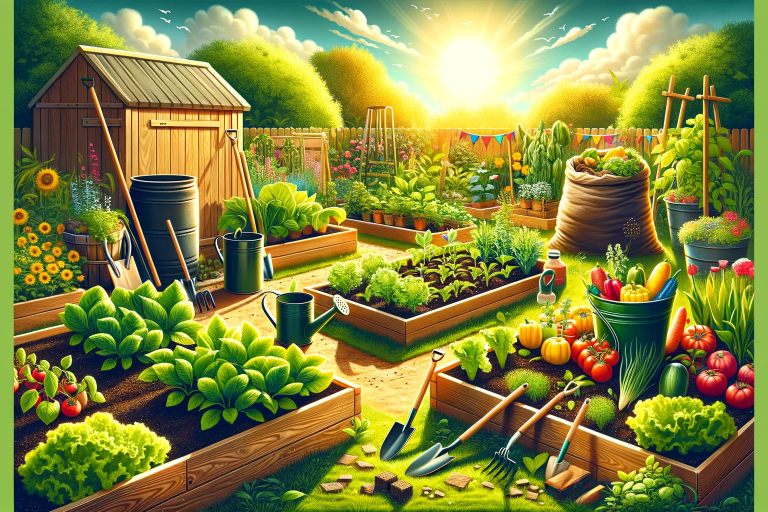As I was setting up our garden for this year, it struck me that many might be wondering where to begin with gardening, whether they're in the countryside, the suburbs, or an apartment. Gardening can be versatile, fitting into various spaces, from container and raised bed gardening to traditional methods. Here's my guide to starting your own garden:
1. Choosing the Right Location: The first step in starting a garden is selecting the right spot. Most crops thrive in full sun, so find a sunny spot in your yard. There are apps for Android and iPhone to track the sun's path, helping you choose the best location even in winter.
2. Deciding What to Grow: Focus on crops that your family consumes regularly and those that can be preserved. It's great to experiment, but the core of your garden should be plants that you'll utilize.
3. Acquiring Seeds: Buy your seeds early in the year for better deals. I personally recommend checking out MI Gardener's seed store for affordable and high-quality seeds. Remember to plan which seeds need to be started indoors and which can be directly sown.
4. Preparing the Garden Space: Decide whether you'll opt for raised beds or traditional gardening. Each has its benefits. Raised beds require an initial investment but offer long-term gains and ease of maintenance. Traditional gardening is simpler to start.
5. Soil Amendments: Enhancing your soil is crucial. You don’t necessarily need to test your soil, but adding organic matter like compost can significantly improve its quality.
6. Starting a Compost Pile: Begin composting now. It’s an easy way to enrich your soil annually without any fancy equipment. Just make a pile in a corner of your yard and turn it occasionally.
7. Planting Your Garden: Follow the instructions on your seed packets for the best results. Pay attention to the height of plants to ensure taller crops don't overshadow shorter ones.
8. Garden Maintenance: Regular weeding is vital. Letting weeds take over can ruin all your hard work. Mulching with wood chips is an effective way to keep weeds at bay.
9. Watering: Use fan sprinklers for gentle, efficient watering. Once plants are established, they won’t need as frequent watering, but don’t neglect them during dry spells.
10. Harvesting and Preserving: Prepare for harvest by ensuring you have the necessary canning supplies or plans for freezing. Staggering your planting can extend your harvest season.
11. Preparing for Next Year: Once harvesting is done, cover your garden with leaf compost, straw, or woodchips to preserve soil quality for the next season.
For those new to gardening, I hope these tips guide you in starting your own garden. Experienced gardeners, feel free to share your tips in the comments. Happy gardening!

